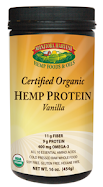Given the rise in a more holistic approach to the consumption of food, why not conform to a more natural approach to your daily skin care routine. Below are some natural homemade facial recipes. Find your skin type and prepare these nutrient rich recipes for your face in your kitchen.
*All facials should be followed with your regular cleansing routine. All yogurt recipes call for plain no flavour yogurt.
Moisture And Sooth
2 egg whites
2 tbsp of plain yogurt
Mix ingredients together and leave on for 5 mintues before washing off with a warm wash cloth.
Cleanse And Rejuvenate
1 tbsp oatmeal
1tbsp plain yogurt
A few drops of honey
Warm up a few drops of honey and mix together the ingredients. Apply to face and leave on for 10 minutues before washing off with a warm washcloth.
Pore Cleansing With Natural Acids For Olily And Acne Prone Skin
1 tsp lemon juice
2 egg whites
3 tsp honey
1 cup mashed strawberries
Mix ingredient together and leave on for 10 minutes. Wash off with a warm wash cloth
Moisture Infused For Dry Or Aging Skin
½ Avocado
¼ cup honey
Mash the avocado and then stir in the honey. Apply to face for 10 minutes before washing off with a wash coth.
Soothing For Sensitive Skin
1/2 cup of oatmeal
1 cup of plain cold yogurt
Mix the ingredients together and apply for 15 minutes. Wash off mask with warm water and washcloth.
Saturday, December 26, 2009
Wednesday, December 23, 2009
Organic Fiber Gummy Bears
Santa Cruz a California based manufacturer since 1968 which originated by two surfers, has introduced Fiber Advance Gummies, an all-natural supplement in a chewy gumdrop. One serving of two fruit-flavored gummies provides 4 g of dietary fiber. And get this, the product's fiber source (inulin from chicory root) acts as a sweetener. How nutralicious is this!
Click here to be taken directly to Santa Cruz website.
Click here to be taken directly to Santa Cruz website.
Labels:
child nutrition,
fiber,
nutrition,
snacks,
sweetner
Tuesday, December 22, 2009
Follow up: Proposed New Standards for Marketing Healthy Foods to Kids
In response to my previous blog about child obesity, new nutrition standards have been published on how food should be marketed to children by the FTC and other government agencies.
Foods marketed to children would be required to provide a meaningful contribution to a healthful diet. Two options for marketers exist: A requirement that 50% of a food’s weight should come from healthful foods, including fruit, vegetable, whole grain, nuts, seeds, or beans. The second option is marketed food should contain any number of a minimum amount of listed foods that characterize a “healthful diet according to a preset list of foods that have been established. ”Foods exempt from the new standards would include 100% content products of fruits, vegetables, non-fat and low-fat milk and yogurt, whole grains, and water.
If this is adopted, the way in which we market and advertise to children will shift in favour of healthier foods that are better for children and away from unhealthy foods that have contributed to the rise in child obesity.
A final report to Congress is scheduled for July 15, 2010 by the Interagency Working Group on Food Marketed to Children. A group that consists of representatives from the FTC, FDA, the United States Department of Agriculture, and the Centers for Disease Control and Prevention.
Foods marketed to children would be required to provide a meaningful contribution to a healthful diet. Two options for marketers exist: A requirement that 50% of a food’s weight should come from healthful foods, including fruit, vegetable, whole grain, nuts, seeds, or beans. The second option is marketed food should contain any number of a minimum amount of listed foods that characterize a “healthful diet according to a preset list of foods that have been established. ”Foods exempt from the new standards would include 100% content products of fruits, vegetables, non-fat and low-fat milk and yogurt, whole grains, and water.
If this is adopted, the way in which we market and advertise to children will shift in favour of healthier foods that are better for children and away from unhealthy foods that have contributed to the rise in child obesity.
A final report to Congress is scheduled for July 15, 2010 by the Interagency Working Group on Food Marketed to Children. A group that consists of representatives from the FTC, FDA, the United States Department of Agriculture, and the Centers for Disease Control and Prevention.
Sunday, December 20, 2009
Children and The Media-Unhealthy Marketing
The hot topic within childrens media is the rise in child obesity and unhealthy eating habits caused by the alarming number of unhealthy food and drink ads on television. These aren't just any food and drink ads they are foods that are ranked as the poorest nutritional quality which have been attributed to the rise in child obesity. These advertisements have a huge impact on the choices of food children select after watching television.
A new study - "The Impact of Industry Self-Regulation on the Nutritional Quality of Foods Advertised on Television to Children" by Dale Kunkel, a professor of communication at the University of Arizona, and UA graduate students, will be presented tomorrow at the Federal Trade Commission in Washington. The initiative includes some of the largest food conglomerates that make up two thirds of the industry's ad budget, and the goal is to improve the nutritional quality of food found in advertisements that are directly targeted to children.
Findings :
Read the full article "Report Says Children Are Still Bombarded With Television Ads For Unhealthy Food Choices" published by Medical News Today (December 17, 2009).
Summary by NutritionJunkie (Source: Medical News Today)
A new study - "The Impact of Industry Self-Regulation on the Nutritional Quality of Foods Advertised on Television to Children" by Dale Kunkel, a professor of communication at the University of Arizona, and UA graduate students, will be presented tomorrow at the Federal Trade Commission in Washington. The initiative includes some of the largest food conglomerates that make up two thirds of the industry's ad budget, and the goal is to improve the nutritional quality of food found in advertisements that are directly targeted to children.
Findings :
- 72.5 percent, of the foods advertised on television to children are for products in the poorest nutritional category.
- Healthy foods such as vegetables and fruits account for only 1% of all food advertising to children.
- To view 1 healthy food ad, it requires 10 hours of television on a children's programs.
- 49 percent of all food ads with licensed characters, such as Sponge Bob Square Pants, promote foods in the poorest nutritional category.
Read the full article "Report Says Children Are Still Bombarded With Television Ads For Unhealthy Food Choices" published by Medical News Today (December 17, 2009).
Summary by NutritionJunkie (Source: Medical News Today)
Labels:
advertising,
child nutrition,
child obesity,
media
Subscribe to:
Posts (Atom)



.jpg)


